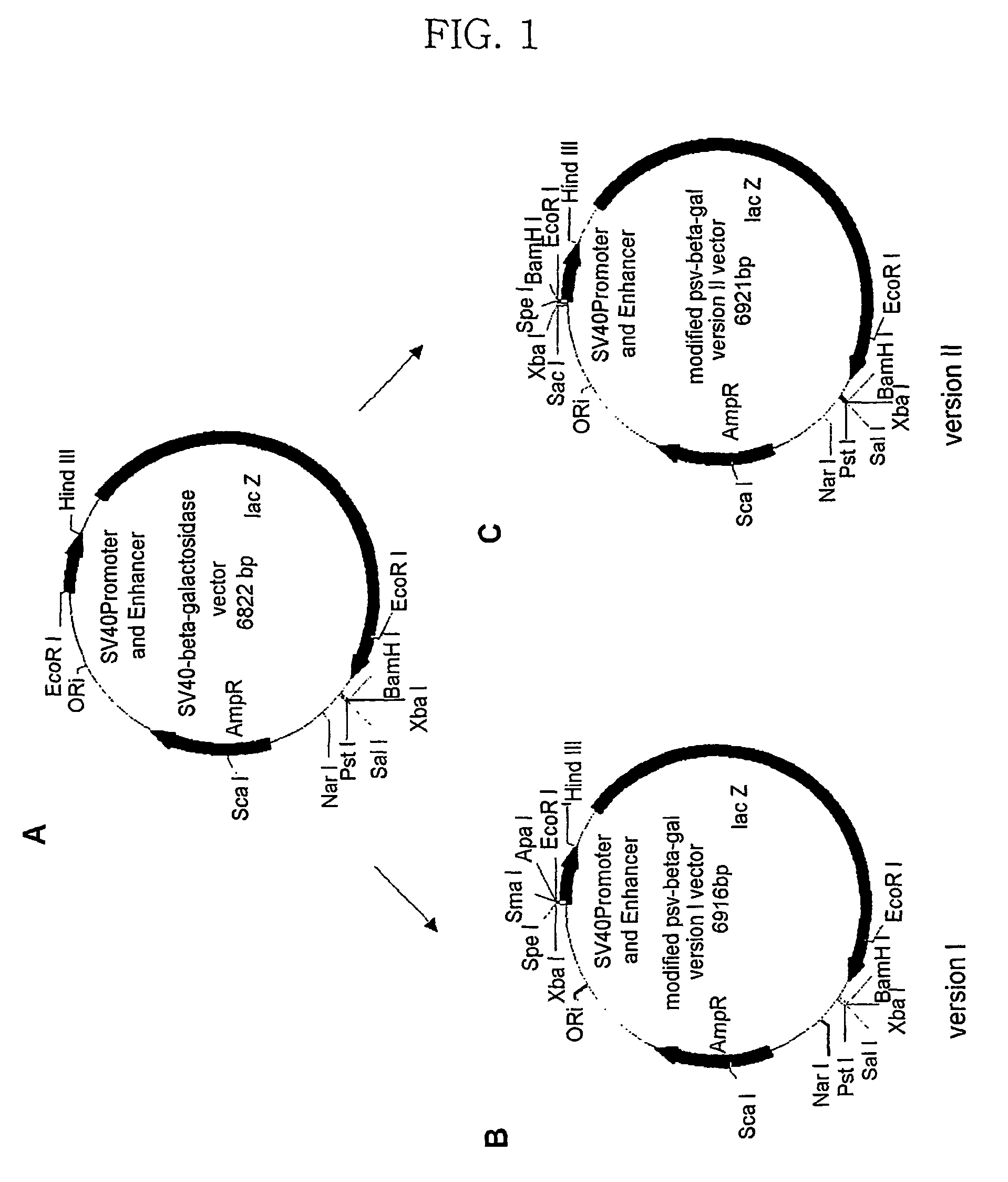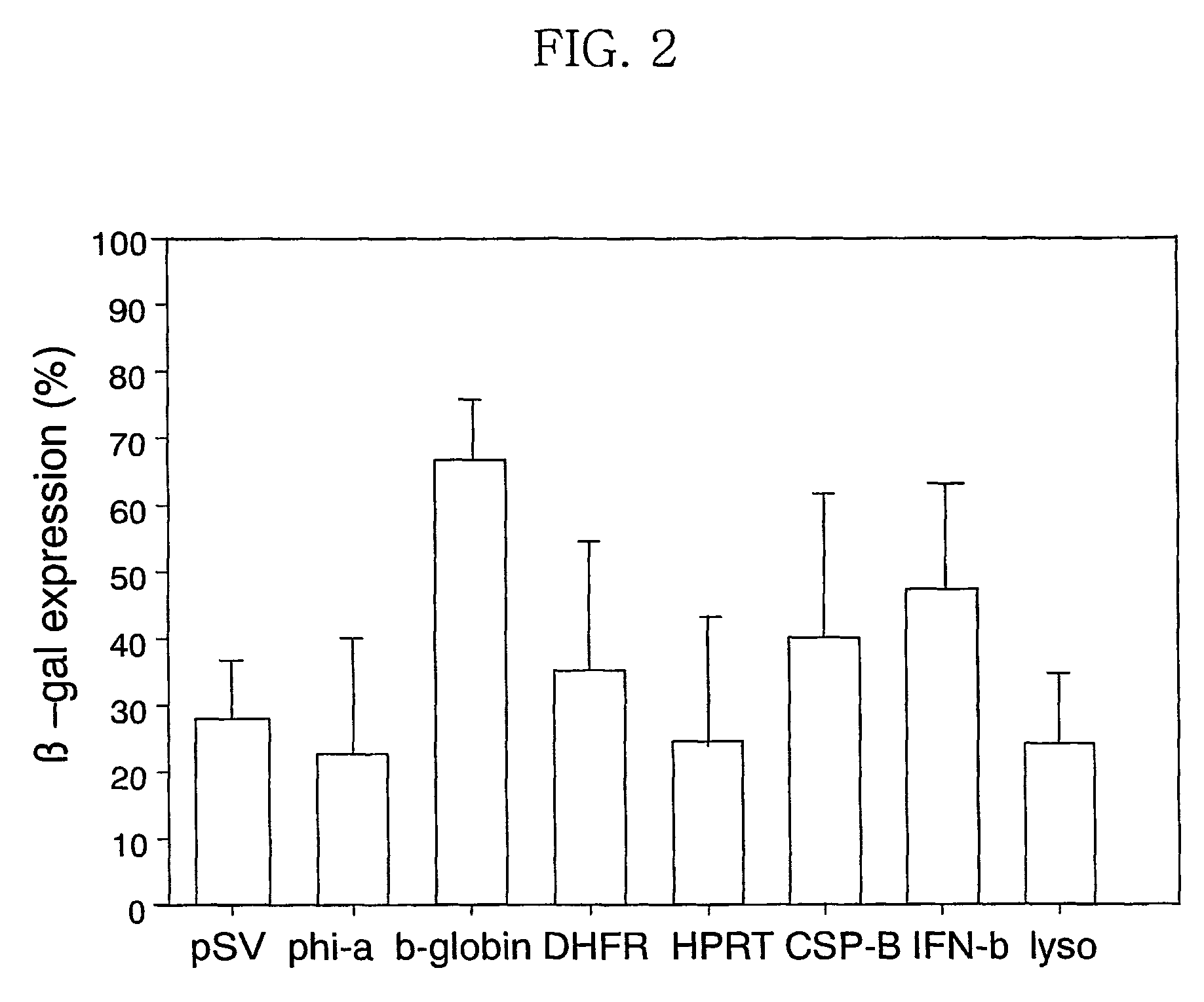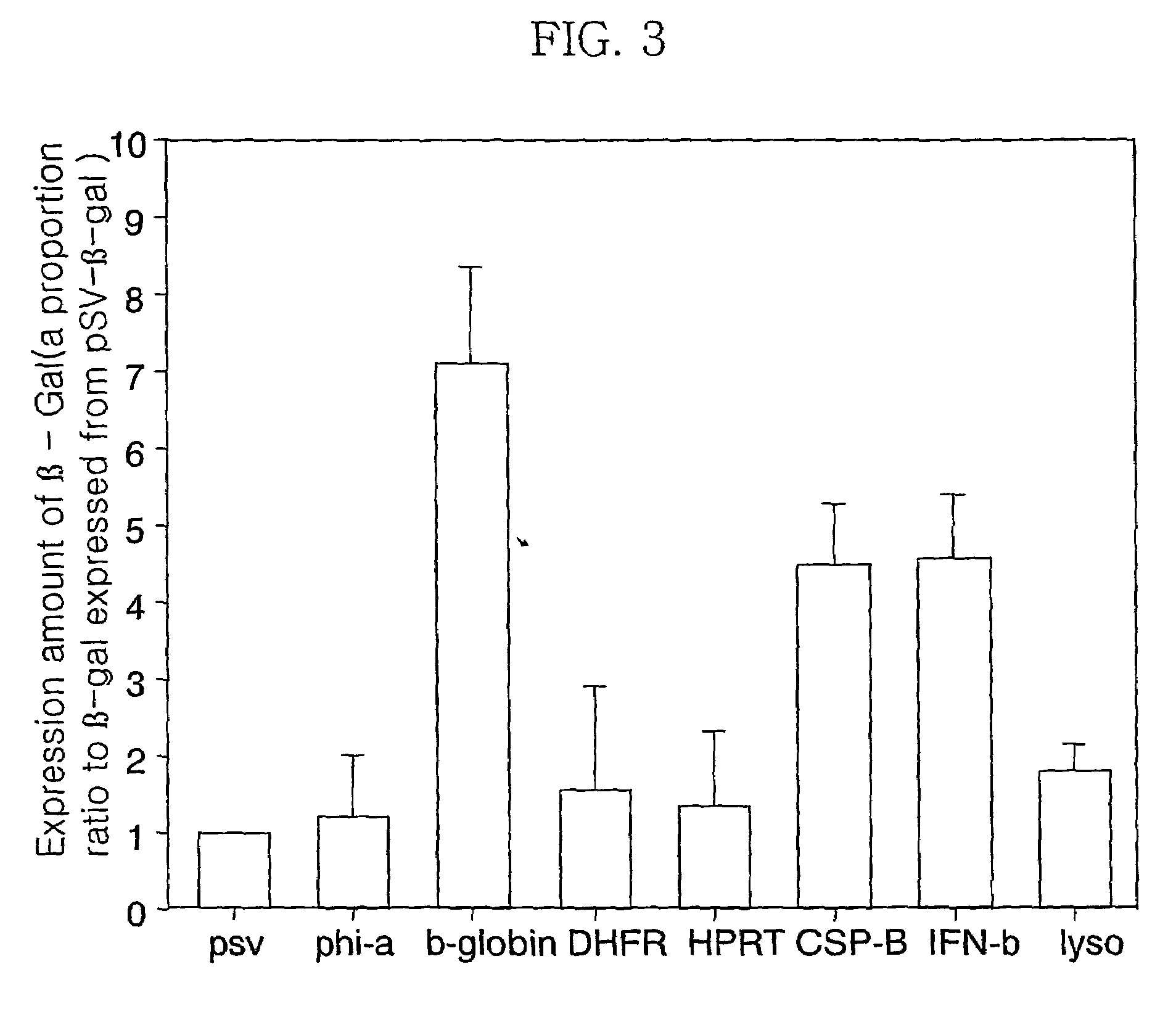Expression vector for animal cell
a technology of expression vectors and microorganisms, applied in the field of expression vectors for animal cells, can solve the problems of limited use of microorganism expression systems, higher production costs, and recombinant protein production, and achieve the effect of increasing the expression efficiency and levels of foreign genes
- Summary
- Abstract
- Description
- Claims
- Application Information
AI Technical Summary
Benefits of technology
Problems solved by technology
Method used
Image
Examples
example 1
The Preparation of pMS-β-gal Vector
[0072](1) Preparation of pMS-β-gal Vector
[0073]A pMS-β-gal vector was prepared as follows.
[0074]① Genomic DNA Isolation from a G-2 Cell in Order to Obtain a Base Sequence of Human 3-globin MAR
[0075]A genomic DNA is isolated from a G-2 cell in a human host by use of a Wizard Genomic DNA purification kit (a product of Promega Co.), and the purification procedure followed the experimental procedure supplied by the production company.
[0076]② Perform Genomic PCR and Subcloning
[0077]In order to obtain a fragment of human β-globin 5′ MAR, the purified genomic DNA was used as a template, and a sense primer BML1 and antisense primer BMR 1 for β-globin MAR were used in genomic polymerase chain reaction (PCR). BML1 and BMR1 were listed as a SEQ ID No. 9 and a SEQ ID No. 10, respectively. The PCR was performed with 32 cycles. Table 2 shows the cycle numbers.
[0078]
TABLE 2Experimental conditionCycle numbers194° C., 2 min. 1294° C., 30 sec. → 60° C., 45 sec. → 7...
example 2
Preparation of pSPUK, pMSPUK, pCPUK, and pMCPUK
[0099](1) Preparation of pCMV Vector
[0100]A pCMV vector was prepared in order to make cloning of a CMV promoter and a SV40 promoter to scu-PA genes easy. A PCR for obtaining the CMV promoter, MCS site, and a transcriptional termination site of pcCDNA 3.1 (+) (a product by Invitrogen Co.) was performed. A PCR sense primer is CMVL1 (SEQ ID No. 11), and an antisense primer is PAR1 (SEQ ID No. 12). The CMVL1 primer has Sac II, Cla I, Nru I sites, and the PAR1 primer has BsmI site. After a 1.4 kb of PCR product was digested with the Sac II and Bsm I, it was ligated with a linearized recombinant pSV-g-gal version I in order to prepare pCMV.
[0101](2) Preparation of pSPUK, pMSPUK, pCPUK, and pMCPUK
[0102]In order to prepare a recombinant expression vector for scu-PA expression in an animal cell, scu-PA genes are obtained by PCR from the genomic DNA separated from a CHO cell strain having scu-PA genes originated from a human TCL-598 cell strain a...
example 3
Preparation of pSG-β-gal Vector
[0114](1) Preparation of the Transcription Termination Site of the Gastrin Gene and the pSG-β-gal Vector
[0115]After the sense strand of the transcription termination site of gastrin genes of SEQ ID No. 15 was synthesized, and an antisense strand of SEQ ID No. 16 was synthesized, the two were annealed. The annealing fragment was treated with BamH I and Pst I, and integrated into and joined with linearized pSV-β-gal vector (a vector produced by Promega Co.) by BamH I and Pst I digestion at the 3′ of the SV40 p(A) terminator, so that pSG-β-gal was prepared.
[0116](2) Measurement of the pSG Vector Efficiency
[0117]The pSG-β-gal vector was co-transfected into Cos-7 cell with a pSV2neo vector by using DOSPER (Roche), in order to measure the expression titer of β-Gal.
[0118]FIG. 12 shows the expression titer of β-Gal in the pSG-β-gal vector. The pSG-β-gal vector comprising the construct consisting of the SV40 poly-A and the transcription termination site of the ...
PUM
| Property | Measurement | Unit |
|---|---|---|
| structure | aaaaa | aaaaa |
| concentration | aaaaa | aaaaa |
| frequency | aaaaa | aaaaa |
Abstract
Description
Claims
Application Information
 Login to View More
Login to View More - R&D
- Intellectual Property
- Life Sciences
- Materials
- Tech Scout
- Unparalleled Data Quality
- Higher Quality Content
- 60% Fewer Hallucinations
Browse by: Latest US Patents, China's latest patents, Technical Efficacy Thesaurus, Application Domain, Technology Topic, Popular Technical Reports.
© 2025 PatSnap. All rights reserved.Legal|Privacy policy|Modern Slavery Act Transparency Statement|Sitemap|About US| Contact US: help@patsnap.com



